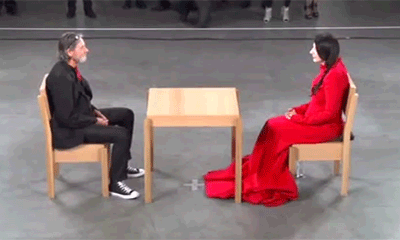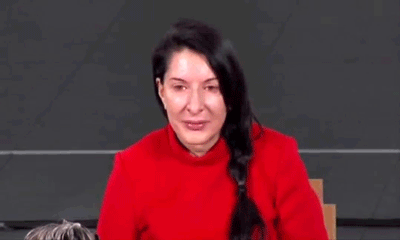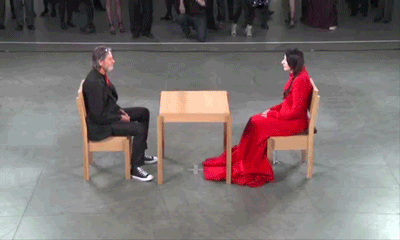Text
Thesis Exhibition Review
I found the Thesis Exhibition engaging as a whole, and especially appreciated the various mediums present throughout. I found many of the artists found new engaging and unique ways to utilize various mediums. What stood out to me most of the Exhibition was the conceptual aspect that each artist applied to their series, I found this in most cases to be the strongest aspect of the bodies of work. There were many critical and stimulating ideas behind each body of work which engaged very current and relevant content around social issues and questioning of the human experience, allowing the exhibition as a whole greater depth and take away for the viewer. The body of work which stood out to me most both in execution and in content was that of Eirianeth Claire Hays. Hays produced a series of large scale oil painted portraits. These portraits explore the separation of our personal experience from others. And the ways in which our inability to transcend our own “lens” distorts our interpretation and perception of others, she highlights this quality by distorting the faces of her portraits with a smearing or dragging painting technique. What gives these portraits the most impact is their stark contrast from the center self portrait, whose lighting is quite vivid and very clear, almost glowing. Her execution of the center piece is sharp and well done, the quality of light in the portrait gives a depth and dimension to the series as a whole. The title of the piece “The only eyes ill never behold” inform the viewer in a non direct way that it is a self portrait, allowing one to interpret on their own. Which is always more engaging.

1 note
·
View note
Text
Remembering Tehan: A Decade’s Review
An artist lecture with Golnar Adili
Metro’s Center for Visual Arts, hosted Golnar Adili, one of the artist whose work is currently showing in their exhibition, Presence. Presence highlights the experience of Middle Eastern American artists and their different manifestations and various experiences of displacement as well as the challenges of cross cultural integration. Adili traveled back to her home Tehan on an artist grant. Through fresh eyes upon her return, Adili noticed the vast discrepancies between women’s experiences inside and outside of the home. She began to record her experience visually with photographs, documenting her travels and life, recording them in an informal journal. This medium allowed her to quite naturally and authentically trace her experience, and further experiment by manipulating the images to reflect the psychological quality of these reflections. This process lead to her ultimate arrival with this series, Remembering Tehan: A Decade’s Review, which consists of several large scale photographs cut and reconfigured along with additional similar or contrasting images. The images cut vertically and repositioned together creates a visual manipulation and natural distortion of the scenes. This visual distortion seems to reflect Adili’s internal experience of displacement from her home, Tehan, and reintegration into a foreign culture, especially from a female perspective. Through this reintegration our memory and identity transforms and is manipulated, looking on to the past is distorted through the lens of our various experiences and conjured through photographs. Adili’s closeness by means of her tactile hand-made relationship with her pieces, as well as the natural closeness and intimacy of the subject matter, imbues her work with depth and impact which came through quite clearly in her work and was further enriched by hearing her speak to her process, her thoughts, and resolutions.
0 notes
Text
How to Print a Cyanotype

*artist unknown

Chloe Besson
To print a Cyanotype image you will need-
potassium ferricyanide, peroxide, ferric ammonium citrate green, and distilled water, a brush, containers for the chemicals. Many of these can be found in an art supply store or online.
prepare your image either by printing on acetate, utilizing a negative, or using a transparency, it is Important however, for the image to be inverted. You can also utilize objects, exposing the chemical paper to the sun to create an image as well.
measure equal amounts of the chemicals in different containers dissolving in water, combine together in generally dark place. Coat your paper in the solution using a brush or a sponge, again a generally dark place is best, as the solution is light sensitive. Allow the paper to dry in a dark room.
Apply your object or image to the paper
Creating a frame using of glass is helpful when exposing the print, keeping it flush to the paper. Expose the image anywhere from 5-10 minutes. then rinse your image, using peroxide can be helpful in expediting this rinsing process.
https://www.youtube.com/watch?v=TJGQ6Ync1a4
https://www.youtube.com/watch?v=jvMtjI2_YEQ
1 note
·
View note
Text
Remember Me


Colorado Photographic Arts Center is displaying works from photographer’s Bree Lamb and Ann Leighton Massoni in celebration of Month of Photography. CPAC presents two quite different female artists who share in their exploration of the elusive quality of memory, yet who do so in two strikingly dissimilar yet equally intriguing ways.
The exhibition opens with Bree Lamb’s colorful, large, and almost disturbingly graphic images which immediately demand your attention, yet do so in such a way that does not allow your eyes to settle on any one point of an image. Bree explores memory by overlapping nostalgic imagery from her childhood with distorted color patterns utilized from photographing computer screens. Both the size and texture conjure a dizzying effect engaging the viewer both to come close and step away. The viewfinder provided by the artist gives the viewer an engaging and less dizzying way in which to view the works.
Massoni’s images which adorn the back end of CPAC’s light filled room. A series of about 15 diptych images which Massoni has printed fluidly together, stitching them visually together with the use of crisp hand drawn acrylic line. Massoni uses this technique to guide the viewer from one image to the other. Massoni calls the viewer to naturally draw connections between two seemingly unrelated images with the use of this line, causing one to create unsuspecting assumptions and creating a dialogue between the two images. Her use of black and white, old and new, borrowed and created imagery is unsuspectingly cohesive creating a beautiful and uncommon visual experience.
Both artists achieved surprisingly engaging images with the use of quite radically different techniques.
0 notes
Text
call for entries

http://www.strangefirecollective.com/
arts as resistance
http://www.darkroomgallery.com/ex94
Chiaroscuro
http://photoplacegallery.com/intimate-portraits/
Intimate portraits which pierce beyond the surface. “Our bodies are covered but our faces are naked”
0 notes
Text
The feminist art movement had many manifestations and is difficult to pin down into any one category, yet some overarching themes that often existed universally were
. The inclusion of a woman’s perspective, as a ground to shift the overwhelmingly male presence of artists in the institutional art world. This was an effort to transform stereotypes as well
. Often incorporated or borrowed themes from identity art, body art, performance art, and conceptual art
. Meant to create a dialogue between viewer and the art work with a critical view of the institution of art as well as women's role socially.
0 notes
Photo




Samira Yamin, is an Iranian-American artist based out of Los Angeles .Yamin acquired her Bachelor of Arts in both Sociology and Studio art from the University of California Los Angeles. From there she continued on to get her MFA from the University of California Irvine, again in Studio Arts. Yamin and her work have been prolifically exhibited in New York, Denver, and all over California largely in the Los Angeles area. Yamin’s work is politically charged often reflecting her experience as an Iranian- American, and the complexities that arise of straddling those two worlds, this theme appears often in her work, with her use of both very personal family photographs, to time magazine covers depicting the Iraq war.
Yamin’s work of cutting and reconstructing imagery by hand is dynamically personal, in her closeness to both the content as well as the many meticulous man-hours that go into any one piece. The works and what she represents seems a natural extension, exploration, and window into her experience. Aside from her family background and life experience, a pivotal influence of her use of war imagery was initiated upon starting work as a BA art student with 9/11 occurring almost immediately within the start of her first days as a student. The collecting of war imagery was a natural reaction to this event, and seemed to influence the direction that her art progressed from there.
Yamin draws inspiration from another matter close to her physical experience, which she then reflects and processes through her work. Yamin suffers from vision changing migraines, and often uses her intentional disruption and re construction of imagery as a reflection of this visual experience. Yamin draws links between her own visual disruption, to the disruption a photograph can have in the development and processing of a memory, in this association a greater understanding of her relationship to these photographs and memories are gained.
https://www.kcet.org/shows/artbound/samira-yamin-and-the-craft-of-consciousness
http://journal282.ninja/a-heart-felt-interview-on-art-and-politics/
http://samirayamin.com/
0 notes
Quote
Follow your bliss and the Universe will open doors where there were walls.
Joseph Campbell (via liamtinker)
2K notes
·
View notes
Video
youtube
BECOMING AND VANISHING
project #4
as I was late in getting to this project I decided to use footage that I took a couple years ago and just re-concept/edit the video.
1 note
·
View note
Photo
for the funny strange internet culture from which gifs are animated

1M notes
·
View notes
Photo
because i loved this video, but it is so powerful to see the subtle moments, in a gif it captures them better than playing out in real time







243K notes
·
View notes

















